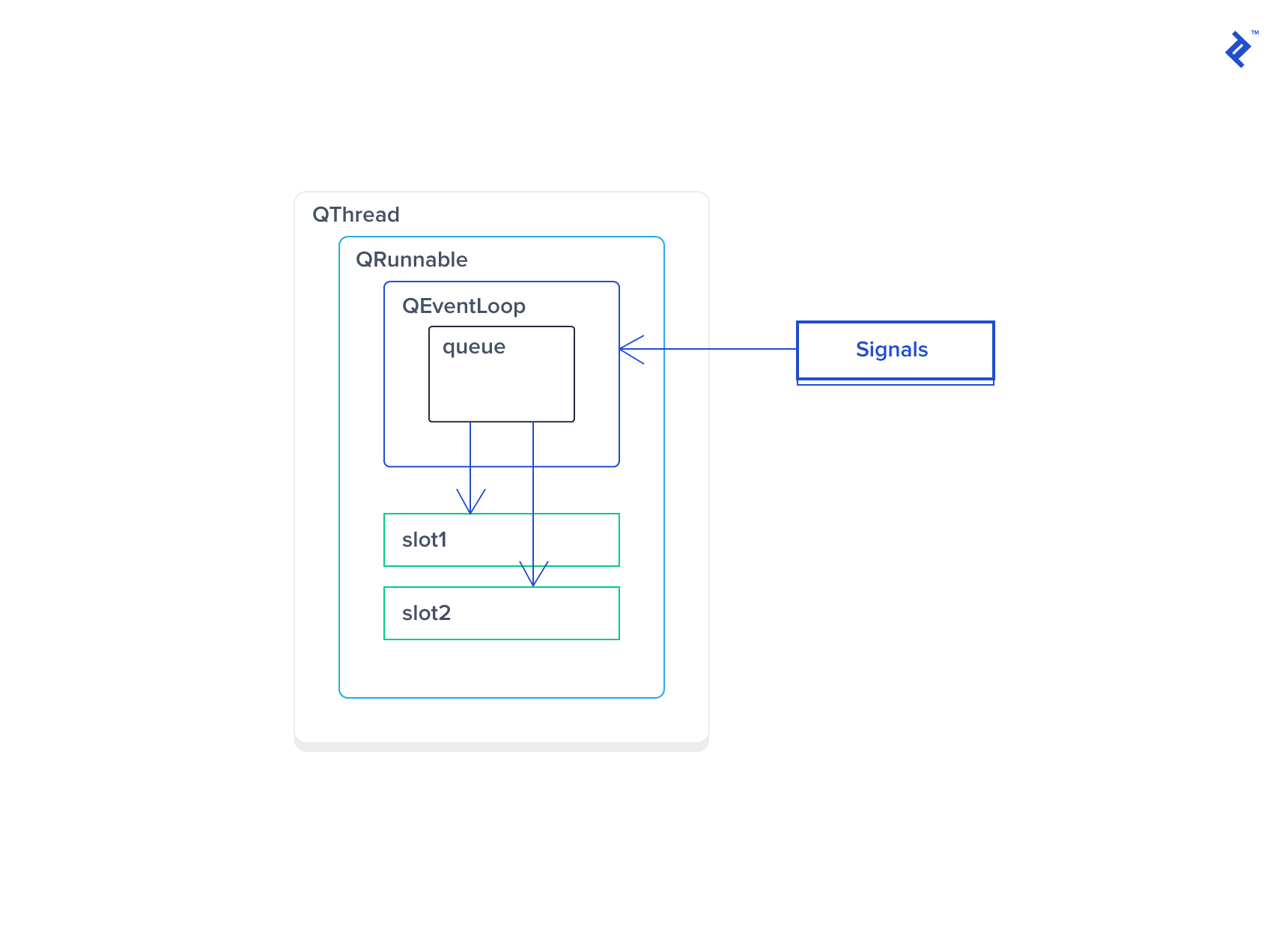Qt Qtimer Signal Slot
In this paper, a QTimer is defined, and the slot function onTimeOut is defined as the slot function corresponding to the timeout signal. The code in the constructor of the window class is as follows. The QTimerclass provides a high-level programming interface for timers. To use it, create a QTimer, connect its timeout signal to the appropriate slots, and call start. From then on, it will emit the timeout signal at constant intervals. Example for a one second (1000 millisecond) timer (from the Analog Clockexample).
Home Qt Development General and Desktop How to handle a QTimer from another Thread in the MainWindow Class with a Connection and Signal and Slot -QueuedConnection.
In QT5, we have a special timer class, QTimer. We can use it to complete some timing operations. Examples are as follows:
At the end of our timer, we need to stop the timer manually, otherwise it will send out the timeout signal continuously. At the same time, we need to note that before making the connection function, we need to have an instance of the timer, otherwise it will cause the program to crash. Of course, we can use the static method of QTimer instead of instantiating the timer to start the timer directly Here is an example of a QT document:
We can use multiple timers in a program. Each timer has its own timer ID, which is similar to the pid of window process. We can use timer event to process multiple timers
reference resources: QTimer timer
The idea of program design is as follows
- Set the timing period first
- Bind the timeout() signal to the custom slot function
- Call the start function to start the timer
The following is the definition in the widget window class:

In this paper, a QTimer is defined, and the slot function onTimeOut() is defined as the slot function corresponding to the timeout signal.
The code in the constructor of the window class is as follows:
In this example, the timing period of the timer is set to 1s, then the signal is bound to the slot, and finally the timer is started.
The code in the timer processing function is as follows:
reference resources: Qtimer of Qt
This page describes the use of signals and slots in Qt for Python.The emphasis is on illustrating the use of so-called new-style signals and slots, although the traditional syntax is also given as a reference.
The main goal of this new-style is to provide a more Pythonic syntax to Python programmers.
- 2New syntax: Signal() and Slot()
Traditional syntax: SIGNAL () and SLOT()
QtCore.SIGNAL() and QtCore.SLOT() macros allow Python to interface with Qt signal and slot delivery mechanisms.This is the old way of using signals and slots.
The example below uses the well known clicked signal from a QPushButton.The connect method has a non python-friendly syntax.It is necessary to inform the object, its signal (via macro) and a slot to be connected to.
New syntax: Signal() and Slot()
The new-style uses a different syntax to create and to connect signals and slots.The previous example could be rewritten as:
Using QtCore.Signal()
Qt Signal Slot Thread
Signals can be defined using the QtCore.Signal() class.Python types and C types can be passed as parameters to it.If you need to overload it just pass the types as tuples or lists.
In addition to that, it can receive also a named argument name that defines the signal name.If nothing is passed as name then the new signal will have the same name as the variable that it is being assigned to.
The Examples section below has a collection of examples on the use of QtCore.Signal().
Note: Signals should be defined only within classes inheriting from QObject.This way the signal information is added to the class QMetaObject structure.
Using QtCore.Slot()
Slots are assigned and overloaded using the decorator QtCore.Slot().Again, to define a signature just pass the types like the QtCore.Signal() class.Unlike the Signal() class, to overload a function, you don't pass every variation as tuple or list.Instead, you have to define a new decorator for every different signature.The examples section below will make it clearer.
Another difference is about its keywords.Slot() accepts a name and a result.The result keyword defines the type that will be returned and can be a C or Python type.name behaves the same way as in Signal().If nothing is passed as name then the new slot will have the same name as the function that is being decorated.
Examples
The examples below illustrate how to define and connect signals and slots in PySide2.Both basic connections and more complex examples are given.
- Hello World example: the basic example, showing how to connect a signal to a slot without any parameters.
- Next, some arguments are added. This is a modified Hello World version. Some arguments are added to the slot and a new signal is created.
- Add some overloads. A small modification of the previous example, now with overloaded decorators.
- An example with slot overloads and more complicated signal connections and emissions (note that when passing arguments to a signal you use '[]'):

- An example of an object method emitting a signal:
- An example of a signal emitted from another QThread:
Qt Qtimer Signal Slot Machine
- Signals are runtime objects owned by instances, they are not class attributes: